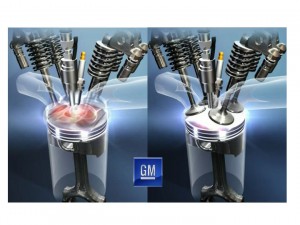Left: Traditional combustion event. Fuel enters via the intake port and a spark plug ignites the air and fuel mixture. The “burn” of the mixture projects from the spark and the flame progresses throughout the combustion chamber. Right: HCCI combustion event. Fuel enters via an injector in the combustion chamber. The air and fuel mixture ignites through heat caused by compression and without a spark. The lower temperature “burn” of the mixture is simultaneous and even throughout the combustion chamber. When combined with several additional advanced technologies, GM’s HCCI engine achieves up to 15 percent improved fuel efficiency, while meeting future emissions standards. Traditional spark ignition is used when the engine is started cold to generate heat within the cylinders and quickly heat up the exhaust catalyst and enable HCCI operation. X07PT_AR022 (United States)
Adsense
Recent Posts
- VW Gets Back on the “T” Train for New SUV Name: Taos
- A Week With: 2020 Nissan Rogue
- Report: VW Set to Sell Bugatti to Croatia’s Little EV Maker Rimac
- 2021 Chevy Silverado Gets Multi-Flex Six-Way Tailgate
- Ford Investing $700M to Set Up EV Plant at Historic Rouge Complex
- First Drive: 2021 Subaru Crosstrek Sport
- Brembo Looks to Grow Brand’s Offerings, Expertise
- Mercedes Set to Become First Manufacturer to Put Solid-State Batteries on the Road
- GM Continues Legal Battle with FCA with New Lawsuit
- GM Turns to its Own Ultium Drive System for Future EVs
- Public EV Charging Companies Are Switching to More Logical Pricing Plans
- First Look: New Nissan Z Proto
- A Week With: 2020 Fiat 500X Sport
- Highway Death Rate Surged 20% During First Half of 2020
- GMC Hummer to Offer “Crab Mode” – Here’s What Else We Know Ahead of Oct. 20 Reveal


Trackbacks/Pingbacks